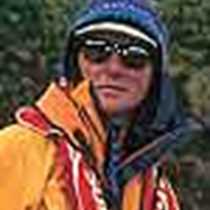Iona, Staff and Tobermory, Inner Hebrides, Scotland
Saint Columba called Iona “love of my heart” and chose it for the site of his monastery. Like love emanating from the heart, Celtic Christianity radiated, and today the island still remains a powerfully spiritual place. Blessed with beautiful scenery, the people are friendly and kind and one gets the feeling of overwhelming peace while strolling through the ancient ruins of the nunnery and at the 12th century abbey. There is no hustle and bustle. No traffic or even a stop sign. The elderly ride around in electric carts, pedal bicycles, or simply walk by and say hello. It is pleasant and a welcome respite. We strolled around the small village, explored the abbey and some of us even found the elusive corncrake, a land rail closely related to moorhens and coots, yet found only in a few places in Great Britain.
Staffa on the other hand, has its own spirit as well as some unique columnar basalt rock formations. Waves and time have lifted, tilted and weathered its structural integrity, and Fingal’s Cave is a well-known result of this long process. We were able to either walk into the cave from the shore or cruise into it by Zodiac. Or both.
The meadows on top of Staffa are a treat even if you don’t seek out puffins. We did see puffins from the top of the island as well as on the Zodiac cruises. Hundreds of puffins were all lined up, standing around courting and looking well-dressed, while many of them flew to and from the tops of the cliffs, some of them strutting about at just an arms length. It is hard to not like puffins, so we thoroughly enjoyed their comical company.
Evening rolled around and we still had time to go ashore in the picturesque little town of Tobermory. Alpenglow gave way to twilight and the sounds of laughter in the pubs were all that disturbed the calmness inside the bay.
I don’t know if absolute peace is possible these days, but I believe that it is worth the effort, and I can understand why monks and saints prayed for it and why many people have infinite hope that it can exist. Perhaps the answers lie hidden on these islands; within the locals, within the elderly strolling by or on their bicycles, in the schoolchildren’s voices, or perhaps even deeper, inside Fingal’s Cave. Or in the face of a puffin. You never know.
Saint Columba called Iona “love of my heart” and chose it for the site of his monastery. Like love emanating from the heart, Celtic Christianity radiated, and today the island still remains a powerfully spiritual place. Blessed with beautiful scenery, the people are friendly and kind and one gets the feeling of overwhelming peace while strolling through the ancient ruins of the nunnery and at the 12th century abbey. There is no hustle and bustle. No traffic or even a stop sign. The elderly ride around in electric carts, pedal bicycles, or simply walk by and say hello. It is pleasant and a welcome respite. We strolled around the small village, explored the abbey and some of us even found the elusive corncrake, a land rail closely related to moorhens and coots, yet found only in a few places in Great Britain.
Staffa on the other hand, has its own spirit as well as some unique columnar basalt rock formations. Waves and time have lifted, tilted and weathered its structural integrity, and Fingal’s Cave is a well-known result of this long process. We were able to either walk into the cave from the shore or cruise into it by Zodiac. Or both.
The meadows on top of Staffa are a treat even if you don’t seek out puffins. We did see puffins from the top of the island as well as on the Zodiac cruises. Hundreds of puffins were all lined up, standing around courting and looking well-dressed, while many of them flew to and from the tops of the cliffs, some of them strutting about at just an arms length. It is hard to not like puffins, so we thoroughly enjoyed their comical company.
Evening rolled around and we still had time to go ashore in the picturesque little town of Tobermory. Alpenglow gave way to twilight and the sounds of laughter in the pubs were all that disturbed the calmness inside the bay.
I don’t know if absolute peace is possible these days, but I believe that it is worth the effort, and I can understand why monks and saints prayed for it and why many people have infinite hope that it can exist. Perhaps the answers lie hidden on these islands; within the locals, within the elderly strolling by or on their bicycles, in the schoolchildren’s voices, or perhaps even deeper, inside Fingal’s Cave. Or in the face of a puffin. You never know.




